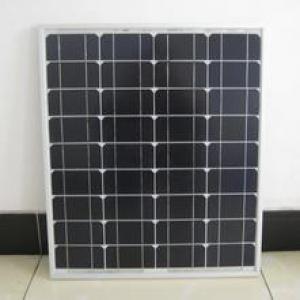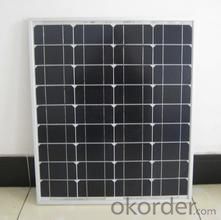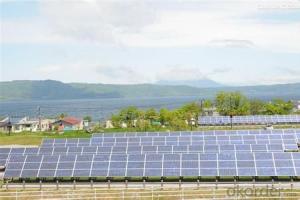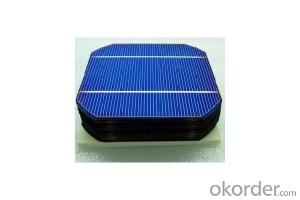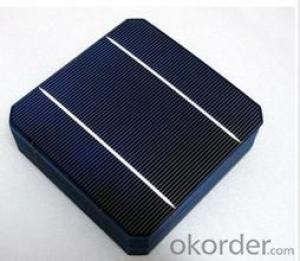Shingled Solar Cells - Super Quality Monocrystalline Silicon Solar Cell Price
- Loading Port:
- China main port
- Payment Terms:
- TT or LC
- Min Order Qty:
- 10000 m²
- Supply Capability:
- 10000 m²/month
OKorder Service Pledge
OKorder Financial Service
You Might Also Like
| Quick Details | |||||
| Place of Origin: | Model Number: | 2W-315W | |||
| Material: | Monocrystalline Silicon | Size: | Customized dimensions | Number of Cells: | 36/72 |
| Max. Power: | 3W-315W | Certificate: | TUV/IEC61215/IEC61730/CEC/CE/PID/ISO | Color: | Customized |
| Application: | Home,Commercial,Industrial | Warranty: | 25 years | Connector: | MC4 or to what you need |
| Frame: | Firm Aluminum | Glue: | EVA | Surface Glass: | Tempered Glass |
| Transform efficiency: | 18%~19% | Solar Cell: | A Grade 156x156mm Solar Cell | ||
| Packaging & Delivery | |||||
| Packaging Detail: | 1. carton box and pallet 2.According to your requirement/Suitable for shipment | ||||
| Delivery Detail: | 1.15~20 working days after received deposit 2.Based on Qty | ||||
| Specifications | |||||
| 1.100% A grade cell | |||||
| 2. OEM available | |||||
| 3. Super quality competitve price | |||||
| 4. International Standard | |||||
| 5.25 years warranty | |||||

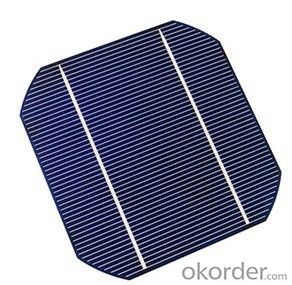
FAQ
We have organized several common questions for our clients,may help you sincerely:
①what price for each watt?
it depends on the quantity, delivery date and payment terms,
②what is your size for each module? can you tell me the parameter of your module?
we have different series of panels in different output, both c-si and a-si. please take the specification sheet for your reference.
③Can you provide the peripheral products of the solar panels, such as the battery, controller, and inverter? If so, can you tell me how do they match each other?
Yes, we can, we have two companies for solar region, one is CNBM International, the other is CNBM engineering Co.
We can provide you not only the solar module but also Solar Cells, the off grid solar system, we can also provide you service with on grid plant.
④What is your warranty system?
Our product performance guarantees for 25 years
• 12 years guarantee for workmanship
• Timeliness of delivery
• Quality Products certified (TÜV, UL, CE, ISO)
⑤How do you pack your products?
We have rich experience on how to pack the panels to make sure the safety on shipment when it arrives at the destination.
⑥ Can you do OEM for us?
Yes, we can.
⑦How long can we receive the product after purchase?
In the purchase of product within three working days, We will arrange the factory delivery as soon as possible. The pecific time of receiving is related to the state and position of customers. Commonly 7 to 10 working days can be served.
How Silicon Makes a Solar Cell
When energy is added to pure silicon, in the form of heat for example, it can cause a few electrons to break free of their bonds and leave their atoms. A hole is left behind in each case. These electrons, called free carriers, then wander randomly around the crystalline lattice looking for another hole to fall into and carrying an electrical current. However, there are so few of them in pure silicon, that they aren't very useful.
But our impure silicon with phosphorous atoms mixed in is a different story. It takes a lot less energy to knock loose one of our "extra" phosphorous electrons because they aren't tied up in a bond with any neighboring atoms. As a result, most of these electrons do break free, and we have a lot more free carriers than we would have in pure silicon. The process of adding impurities on purpose is called doping, and when doped with phosphorous, the resulting silicon is called N-type ("n" for negative) because of the prevalence of free electrons. N-type doped silicon is a much better conductor than pure silicon.
The other part of a typical solar cell is doped with the element boron, which has only three electrons in its outer shell instead of four, to become P-type silicon. Instead of having free electrons, P-type ("p" for positive) has free openings and carries the opposite (positive) charge.
With electricity prices rising everyday, homeowners are looking for alternative means of powering their homes. Solar panels are on the top of everyone's list, but there still pretty expensive. But there's a DIY solution that could possibly give you some extra juice. It's called a solar cell, and we will show you how to make and test a solar cell using a sheet of copper.
These solar cells are basically sheets of copper with a layer of cuprous oxide (Cu2O) on them. The cuprous oxide is a semiconductor. You won't get much electricity from it, and in fact you'd need acres of these to power a home, but it's fun to make!
Start by cleaning the copper sheet. The cleaner, The better. Then heat it on a red hot stove element or in a flame. This creates a thin layer of reddish cuprous oxide (or copper oxide) followed by a thicker layer of black cupric oxide. Cook it for about a half hour to get the black layer really thick. Then let it cool slowly. As it cools, most of the black layer flakes off, leaving only the red cuprous oxide layer.
- Q: What is the impact of hurricane-force winds on solar cell efficiency?
- The impact of hurricane-force winds on solar cell efficiency can be significant. These strong winds can cause physical damage to solar panels, such as breaking or dislodging them from their mounts. This not only affects the overall functionality of the solar system but can also lead to a decrease in energy generation. Additionally, high winds can result in the accumulation of dust, dirt, or debris on the surface of the solar panels, reducing their ability to absorb sunlight and convert it into electricity. Therefore, it is crucial to ensure proper installation and maintenance of solar systems in hurricane-prone areas to minimize the negative impact on efficiency.
- Q: PV: the battery to the battery charge problem
- I use the BUCK circuit, controlled by the microcontroller, the circuit is not too difficult, are ready, but the understanding of BUCK problems. See a lot of books are written on the battery can be constant pressure charging, feeling can not understand. Now I think they are probably wrong, the voltage across the battery in the BUCK circuit is out of control.
- Q: What is the impact of dust and dirt on solar cell efficiency?
- Dust and dirt can have a significant impact on solar cell efficiency. When dust and dirt accumulate on the surface of solar cells, they block sunlight from reaching the cells, reducing their ability to generate electricity. This decrease in solar cell efficiency can lead to a decrease in overall power output and, consequently, a decrease in the overall efficiency of a solar panel or system. Regular cleaning and maintenance of solar panels are necessary to ensure optimal performance and maximize energy production.
- Q: Do you believe you can make a solar cell by using kitchenware?
- I do because I did it once.
- Q: How about the solar cell 156mm Mono-Crystalline?
- It is the kind of solar cells That is unobstructed sunlight of the outdoor environment and it can be Operated under the temperature between -20 ℃ to +85 ℃
- Q: How do solar cells perform in areas with high levels of radiation?
- Solar cells actually perform better in areas with high levels of radiation. This is because higher radiation levels provide more sunlight, which is the primary source of energy for solar cells. As a result, solar cells in areas with high radiation can generate more electricity and have increased efficiency compared to areas with lower radiation levels.
- Q: Can solar cells be used in clothing?
- Yes, solar cells can be used in clothing.
- Q: What is the internal structure of solar panels
- Crystalline silicon solar cells, the cost of equipment is relatively low, but the cost of consumption and battery sheet is high, but the photoelectric conversion efficiency is also high, in the outdoor sun power generation more suitable for thin film solar cells, the relative cost of equipment, but the cost of consumption and battery
- Q: How do solar cells affect the value of a property?
- Solar cells can significantly increase the value of a property due to their ability to generate clean and renewable energy. The presence of solar panels can enhance the property's appeal, lower energy costs, and potentially provide a source of income through net metering or selling excess energy back to the grid.
- Q: How do solar cells perform in high humidity environments?
- Solar cells can still perform efficiently in high humidity environments. However, prolonged exposure to high humidity can slightly decrease their overall efficiency due to the moisture affecting the cell's performance and the build-up of dirt and dust particles. Regular cleaning and maintenance can help mitigate these effects and ensure optimal performance.
Send your message to us
Shingled Solar Cells - Super Quality Monocrystalline Silicon Solar Cell Price
- Loading Port:
- China main port
- Payment Terms:
- TT or LC
- Min Order Qty:
- 10000 m²
- Supply Capability:
- 10000 m²/month
OKorder Service Pledge
OKorder Financial Service
Similar products
Hot products
Hot Searches
Related keywords

